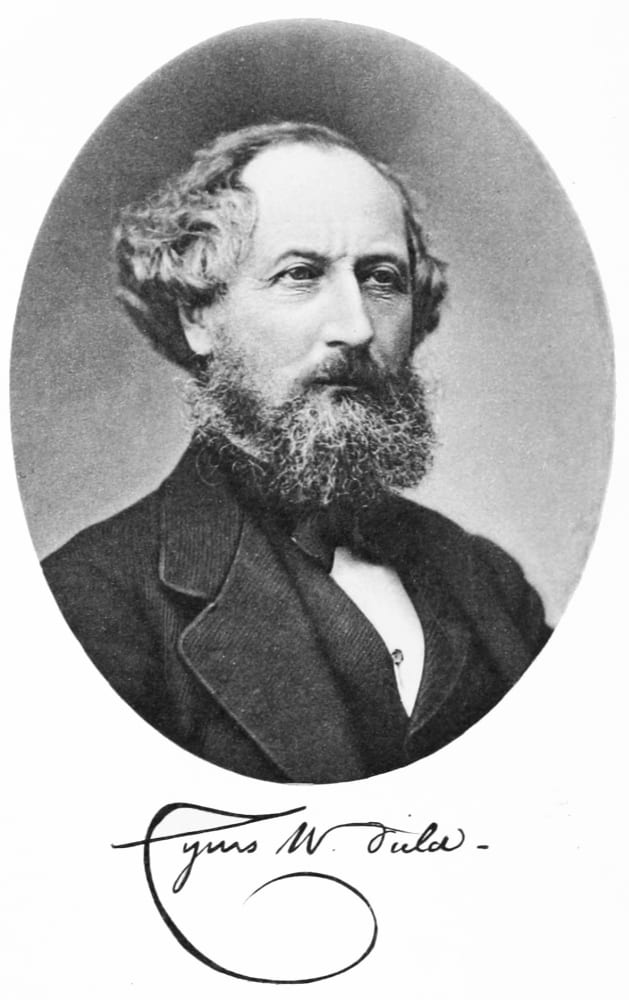How many failures should a person allow himself in pursuit of success with a project?
How many times should someone fail before he or she calls it quits? Just how many times can success elude him or her before we consider that person a failure? Consider the story of Cyrus W. Field and his efforts to lay the first Trans-Atlantic Cable.
The First Try
Cyrus Field cooked up the idea to lay a telegraph cable across the Atlantic Ocean from Great Britain to the United States as early as 1854. By March 1857, he had convinced both governments to invest millions into the project and by July of that year work was ready to begin. Both countries agreed to lend large frigates for the task of laying the 2,300-mile long, 2,500-ton cable. The U.S.’s Niagara and the UK’s Agamemnon began to lay the cable when disaster struck on this first attempt. 335 miles away from the coast of Ireland, the Niagara’s section of the cable broke and $500,000-worth of cable plummeted into the ocean. It was a staggering sum of money for that time.
The Second Try
 A year later both ships tried again, using better equipment and a different method. This time they met midway in the Atlantic, spliced their cables and headed in opposite directions, the Agamemnon toward the UK and the Niagara toward the U.S. After repeated breaks and the loss of hundreds of miles of cable, the two ships returned in defeat to Great Britain and to a furious public outcry.
A year later both ships tried again, using better equipment and a different method. This time they met midway in the Atlantic, spliced their cables and headed in opposite directions, the Agamemnon toward the UK and the Niagara toward the U.S. After repeated breaks and the loss of hundreds of miles of cable, the two ships returned in defeat to Great Britain and to a furious public outcry.
In despair numerous members of the project resigned. Yet at a gloomy meeting of the remaining partners, Fields and his associates reluctantly agreed to try one more time to lay the 2,300-mile-long cable. Initially, it seemed like they had finally succeeded. By August of 1858, Cyrus Field completed the long stretch from Ireland to Newfoundland and tapped out the world’s first trans-Atlantic telegraph message.
But Cyrus’s success did not last long. At the worst possible time the cable suddenly ceased to function. It was right in the middle of a banquet in Cyrus Field’s honor. The United States, the United Kingdom and their public were outraged and demanded a thorough investigation. By this time the project resulted in wasted millions of dollars and had nothing to show for it.
The Third Try
Another seven years and a civil war passed before Cyrus’s revived the project again. This time Cyrus employed a, greatly improved, twice as thick and twice as heavy, cable and the huge steamer, the Great Eastern. Cyrus Field made this latest attempt in July 1865. Though greatly optimistic, Cyrus Field saw this effort end in disaster as well.
The Fourth Try
What did Cyrus do? Call it quits? Resign himself to failure? No, he took all the lessons he learned from each and every failure and used the knowledge to improve on his methods and his equipment. And one year later, on July 27, 1866, Cyrus Field tapped out this message across the Atlantic: “All well. Thank God, the cable is laid and in perfect working order!”
Now, answer the question. Does history regard Cyrus W. Field as a flop, as a failure? Not at all. History only records his success. But if he had quit while he was behind, how would history have judged him? You see, persistence and the refusal to accept defeat make the difference between dismal failure and stunning achievement. God promises us in his word, “’I will never leave you nor forsake you.’ So we may boldly say: ‘The Lord is my helper; I will not fear. What can man do to me?’” (Hebrews 13:5-6, NKJV).
PRAYER:
“Dear God, help me today, and always, to learn from my failures. Please help me to persistently pursue my tasks, and to never quit until my work is done. Amen.”
Author: David Causey. Used with permission.







